Recommended tours
Review & Earn Travel Money
At TripsPoint you have endless possibilities to earn TripsPoint Money - this is your Travel Money your can use to book you next tours and activities everywhere you go.
Here's Space For Everyone
New tours
We stand together! Support Ukraine against Russian aggression!

Find and read unique Travel Guides to travel destinations around
the world - plan your amazing trips with advise from local travel experts.
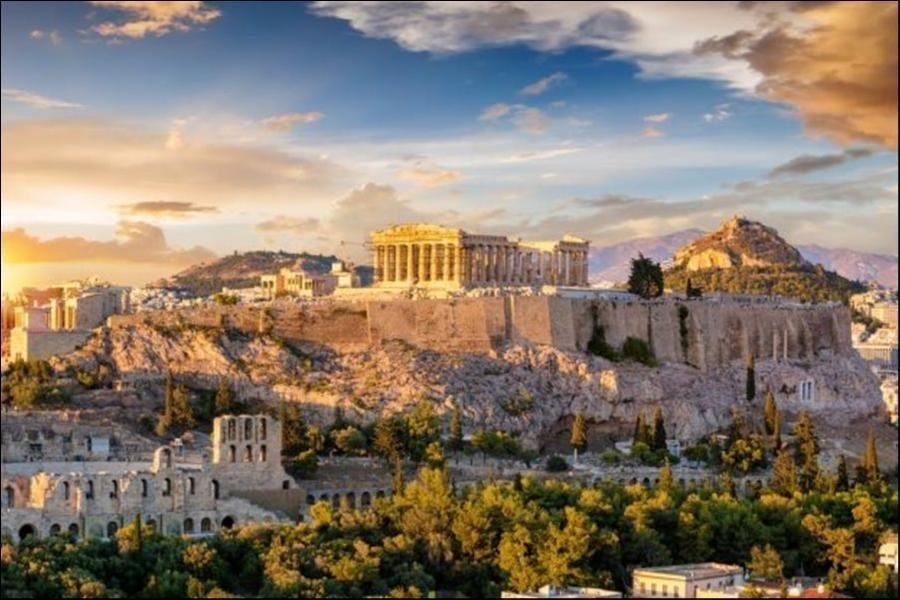
A City Steeped in History – Things to Do in Athens
If you are looking for a city break involving fantastic Mediterranean weather, an abundance of historical sites, mouthwatering cuisine, and a lively nightlife, you do not need to look any further than the capital of Greece, Athens. Considered to be one of the greatest ancient civilizations that ever lived, visiting Athens is like taking a step back in time. However, while the Greek capital celebrates its ancient wonders, it is also a modern metropolis that embraces the new and effortlessly connects it with its fascinating past. As you can imagine of such a city, there are a plethora of things to do in Athens that it will be hard for you to make an itinerary. To help you get started, check out this guide to things to do in Athens.
The number one of all the things to do in Athens, the Acropolis is usually the first thing on people’s minds when they visit the Greek capital. Often mistakenly thought of as one building, the Acropolis is actually an ancient citadel comprising a multitude of buildings. There was actually an acropolis in every Greek city and the remains of many still exist, but the one in Athens is of such significance that has simply become known as ‘the Acropolis’. While there are many interesting ruins to explore here, there are some which you should definitely not miss:
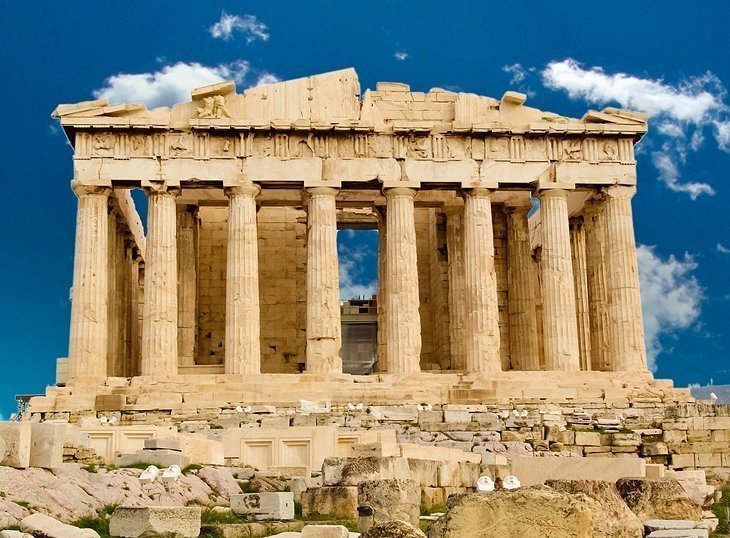
Of course, this is just a small selection of what you can see at the Acropolis; your visit here will more than likely take you most of the day. You can visit the Acropolis either by yourself or as part of a guided tour. Keep in mind that the site gets extremely busy so if you want to beat the majority of the crowds, you will want to try and arrange your visit for either early morning or late afternoon. These are also the best times in terms of weather, especially in the height of summer.
While everyone has heard of the Acropolis, the Ancient Agora of Athens was just as an important part of Athenian life. Translating as ‘gathering place’, an agora was a marketplace and general meeting point, and the center of everyday life in ancient Athens. Like the Acropolis, the Agora is a wide-ranging site and there is plenty to see here. One of the most famous buildings here is the Temple of Hephaestus, a 5th century BC temple which is in a remarkably well-preserved state for its age. Dedicated to Athena and Hephaestus, it is a Doric temple with 34 columns and a wonderful frieze depicting nine of the Twelve Labours of Hercules. Other highlights here include the Stoa of Zeus, the Stoa of Attalos, and the Odeon of Agrippa.
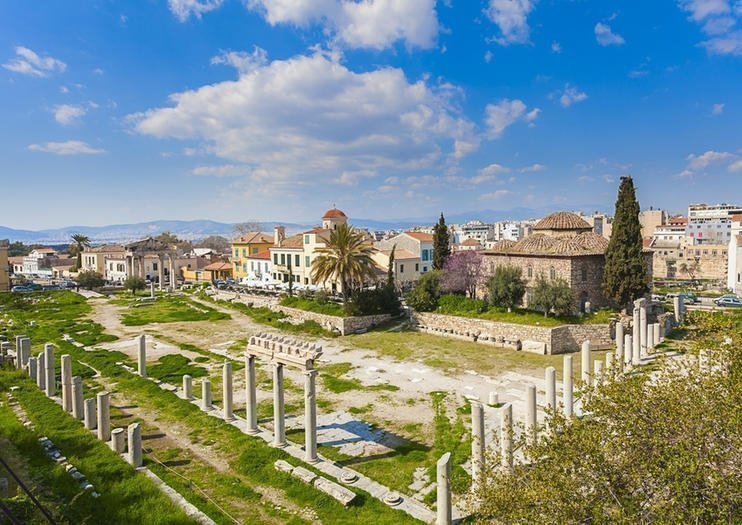
If you want to visit the Ancient Agora of Athens, you can purchase a combination ticket for this site and the Acropolis for €30; this allows you access both these sites plus a few others for five consecutive days, although you are only allowed to enter each site once during this time. This ticket is really worth it – the Acropolis is €20 by itself – and it gives you access to all the best historical things to do in Athens.
Located to the east of the Acropolis, the Temple of Olympian Zeus’s most phenomenal aspect is its immense size. Not much of it is left standing, but it is really easy to get a sense of what a grand building it would have been back in its glory days. Unlike many of the ancient buildings in Athens, the Temple of Olympian Zeus took an extraordinary amount of time to build, beginning construction in the 6th century BC and not completed until the 2nd. As the name suggests, it is dedicated to Zeus, the Greeks’ most important God, which is why it was the largest temple of its kind in Ancient Athens. Only 15 of its columns are still standing, plus one lying down, but it really is one of the most awe-inspiring things to do in Athens.
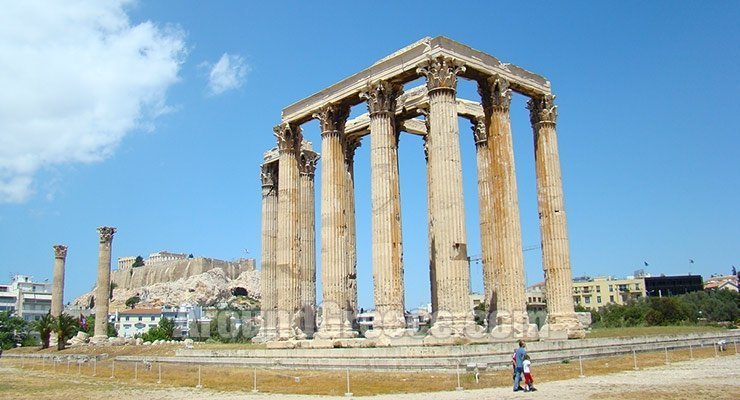
Not far from the entrance of the Temple of Olympian Zeus stands Hadrian’s Arch, a monumental gateway closely resembling a Roman triumphal arch. Roman Emperor Hadrian was a benefactor of the city and the arch was built to commemorate him. Like the temple, the arch is in ruins, but it is nevertheless still impressive.
Socrates is one of the most famous figures in Ancient Greek history. Famed as one of the founders of Western philosophy and the first moral philosopher, despite his notoriety he never actually wrote any of his musings or teachings down; his work is predominantly remembered through the writings of classical writers after his death, including those of his students Plato and Xenophon. In 399 BC, Socrates went on trial for impiety – not believing in the gods – and corrupting the minds of his students and was subsequently found guilty and sentenced to death via drinking a concoction containing poison hemlock. For the duration of his trial, he was allegedly held captive in a series of rock-carved rooms on the slopes of Filopappou Hill – it is now believed that this was not where he was held, but the legend has stuck.
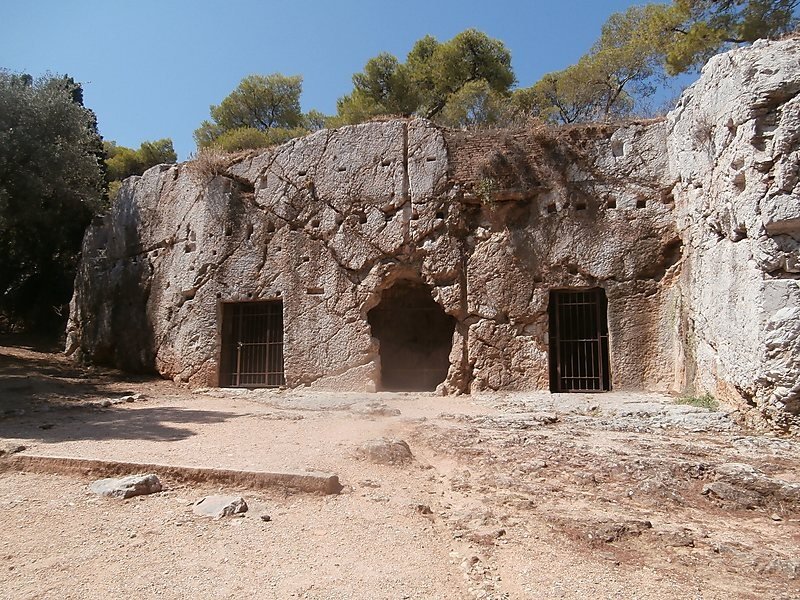
Regardless of whether Socrates was imprisoned here or not, it is still a cool site to visit. As well as having the apparent link with Socrates, the caves were used to hide artifacts from the Acropolis and National Archaeological Museum to protect them Nazi looting.
Just a short walk away from the Acropolis is the Acropolis Museum, founded to house the artifacts which have been discovered and excavated within the immediate and surrounding areas. Items displayed in the Acropolis Museum date from the Greek Bronze Age to Roman and Byzantine Greece and provide a fascinating insight into life in Athens during these times. Upon entering the museum, you will see the ruins of an ancient Athenian neighborhood below you through the glass floor. The Gallery of the Slopes of the Acropolis also gives you glimpses of the ruins below as well as displaying a number of items found from the site. The Archaic Gallery mostly features offerings to Athena but you can also see five of the six maiden columns which held up the Erechtheion.
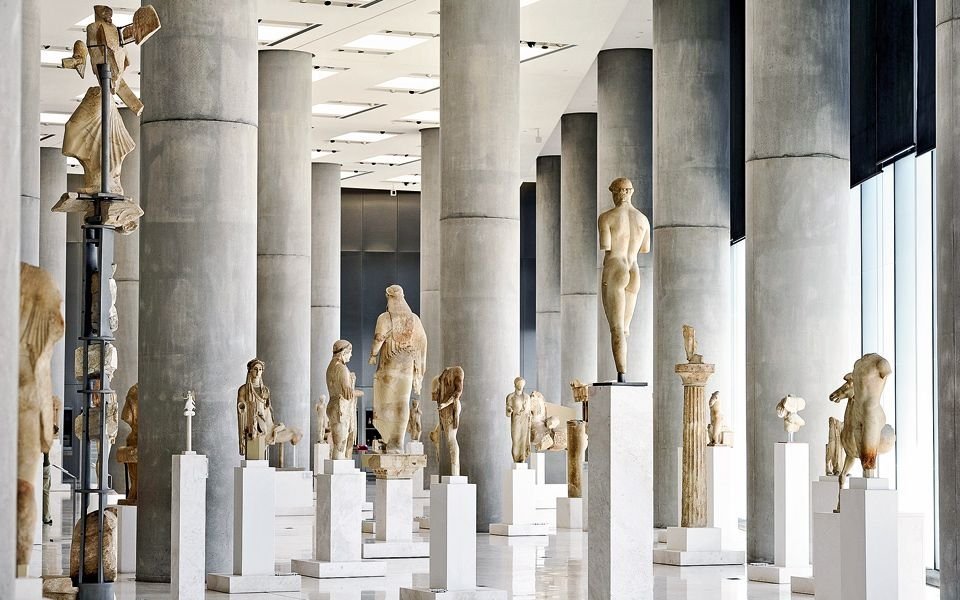
However, the Parthenon Gallery is considered to be the jewel in the museum’s crown. This gallery consists of a glass atrium that houses the temple’s 160-meter long frieze and is set out as it would have been centuries ago.
Housed in the Stoa of Attalos, the Museum of the Ancient Agora displays a vast number of exhibits that focus on the private and public aspects of life in ancient Athens. Here you can see various sculptures, coins, clay, bronze and glass items, and weapons dating from the Neolithic, Bronze Age, Iron Age, and Geometric periods which have been excavated in the Agora area.
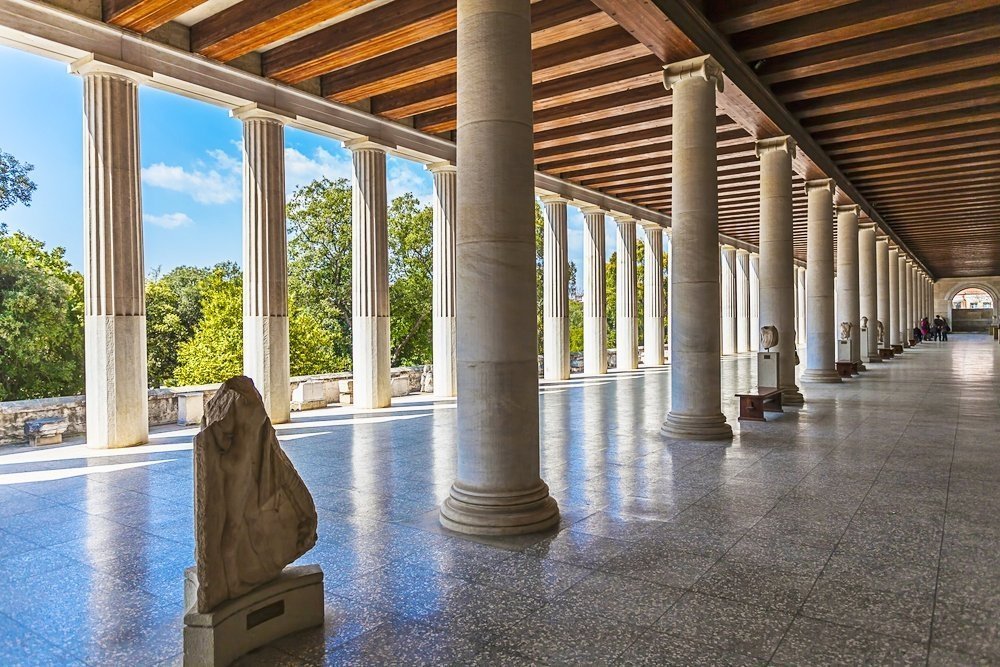
The Museum of the Ancient Agora gives a fascinating insight into this side of Ancient Greece, making it one of the best things to do in Athens.
As the largest archaeological museum in the country, the National Archaeological Museum is one of the things to do in Athens that you really cannot miss. Housing more than 11,000 exhibits, the museum offers visitors the full range of Greek history and is split into six different collections: Prehistoric antiquities, sculpture, metalwork, vases and minor arts, Egyptian antiquities and Cypriot antiquities. While there is much to see here, some highlights include:
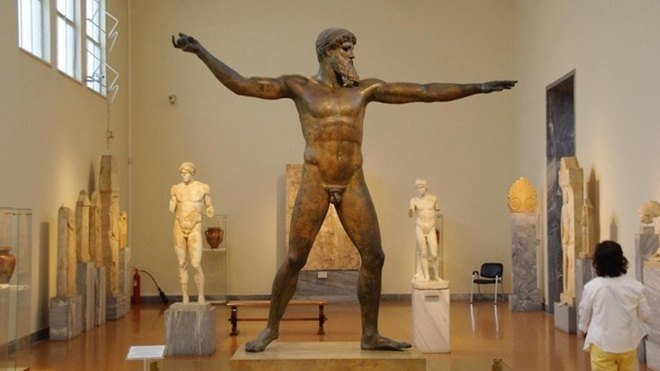
Opened in 1986, the Museum of Cycladic Art showcases the collection of Nicholas and Dolly Goulandris who began acquiring vast amounts of Greek artifacts in the 1960s, with a specific interest in prehistoric art from the Cyclades Islands. Here you can see over 3,000 pieces of Cycladic, Ancient Greek and Cypriot art, from figurines and pottery to jewelry.
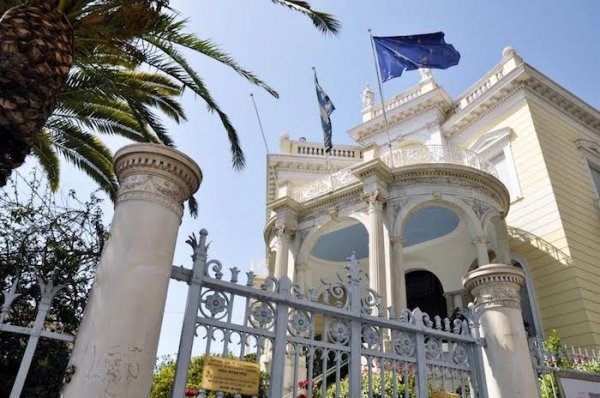
Most visitors come here to see the Cycladic marble figures, but the jewelry is just as stunning to see. As well as the permanent exhibitions, the museum also holds a number of temporary exhibitions during the year.
If you need a break from all the historical sites, you should make your way over to the neighborhood of Plaka to relax and chill out. Nestled between the northern slope of the Acropolis, Plaka attracts many tourists throughout the year because of its charming streets and squares, pretty pastel-colored houses, and lively cafes and restaurants. Rather than feeling like part of a big city, the area has more of a village atmosphere to it, making it one of the loveliest things to do in Athens.

If you plan on doing some souvenir shopping when you are in Athens, Plaka is the place to come; there are lots of family-run shops selling all kinds of local products, such as hand-made jewelry, ceramics, musical instruments, olive oil soaps, and specialty foods.
As such a bustling metropolis, it can be quite hard to find a piece of calm and tranquillity when in Athens. However, if you head over to the National Garden, you can find just that. Beginning life as a royal garden, these beautifully landscaped grounds were made public in the 1920s so everyone could enjoy them. Home to around 7,000 trees, and 40,000 bushes and other plants, taking a stroll around the National Garden can be one of the most pleasant things to do in Athens. But there is more here to enjoy than just admiring the flora. Situated at the main entrance is a sundial which both locals and tourists love, and it is a fun activity trying to guess the time without looking at your watch or phone.
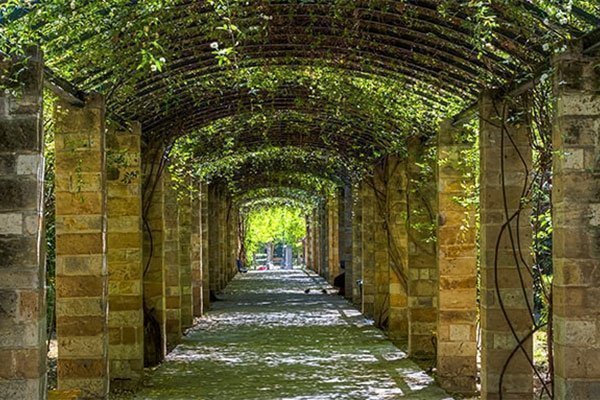
There is also a conservatory, children’s library and cafe to enjoy.
Most people think about doing their sightseeing during the daylight hours, but if you want to get a different perspective of Athens, TripsPoint.com sells an Athens Walking Tour which takes place at sunset. On this small-group tour, your guide will take you to the most popular places in the city, such as the Temple of Olympian Zeus, Hadrian’s Arch, the National Garden, and the Panathenaic Stadium, as well as down some of Plaka’s secret alleyways. To end your tour, you will stroll down by the Hill of the Acropolis to enjoy this often-overcrowded site when all the tourists have left for the day.

As you walk along, your guide will regale you with tales and facts from Athens’s long history so you will leave the tour feeling more knowledgeable about the city.
If you have a spare day during your trip to Athens and fancy getting out of the city for a while, consider this fabulous Day Tour to the Meteora which you can book through TripsPoint.com. Located in the central Greek city of Kalabaka, the Meteora is an incredibly impressive rock formation that is home to one of the largest complexes of Eastern Orthodox monasteries in the world. Originally there were 24 monasteries here, now only six remain. This epic day tour will take you on a tour of the monasteries here, including visiting the interiors of two of them, giving you the chance to admire the beautiful Christian architecture and learn about the influence of the monasteries and how they have managed to exist for well over 700 years, as well as marveling at the breathtaking beauty of the surrounding natural scenery.

While the Meteora Day Tour is a long day, taking approximately 14 hours including traveling to and from the site, it is definitely worth it and should be on your list of things to do in Athens.
If you have not already been to Athens, there really is no excuse for not booking that trip right now. With so many things to do in Athens, from astounding historical sites and fascinating museums to beautiful scenery and fun nightlife, a holiday here is both exciting and educational.
Recommended tours
Review & Earn Travel Money
At TripsPoint you have endless possibilities to earn TripsPoint Money - this is your Travel Money your can use to book you next tours and activities everywhere you go.
Here's Space For Everyone
New tours